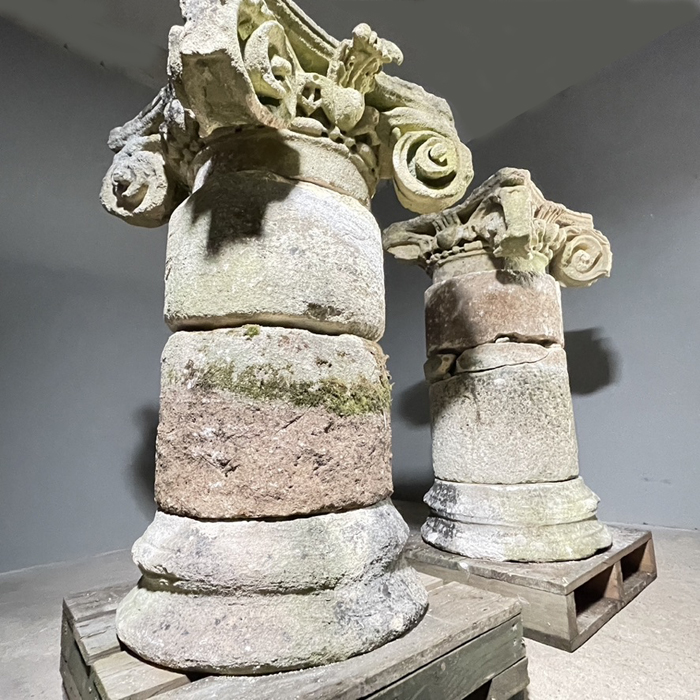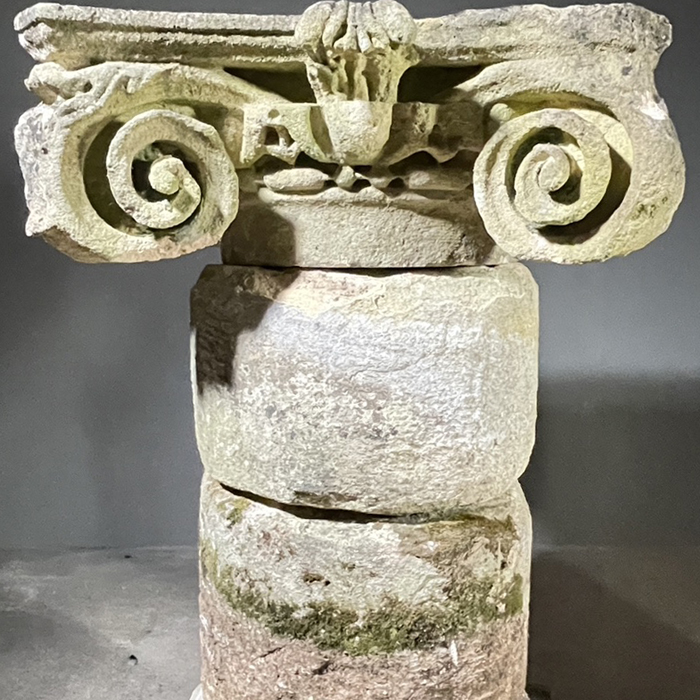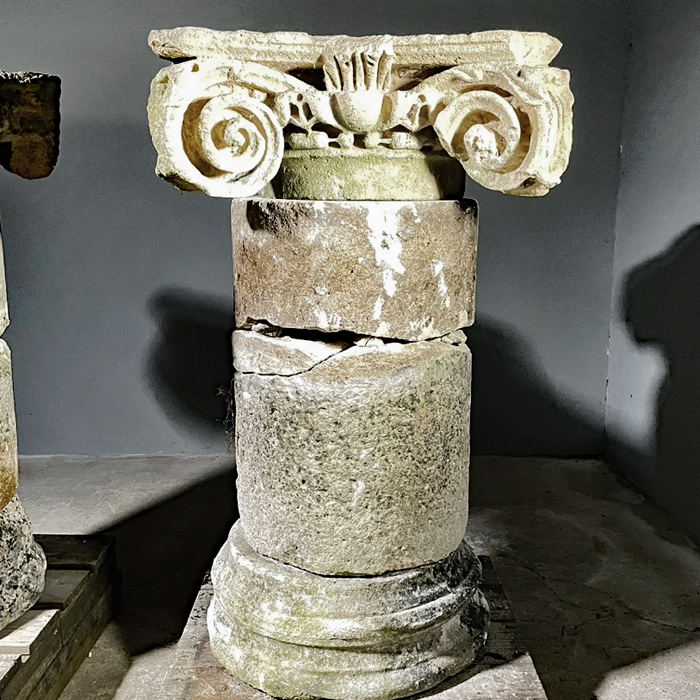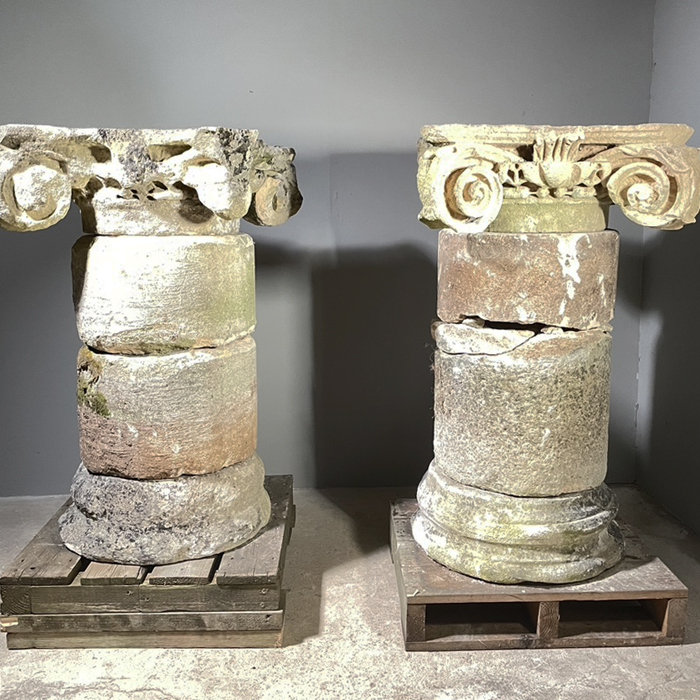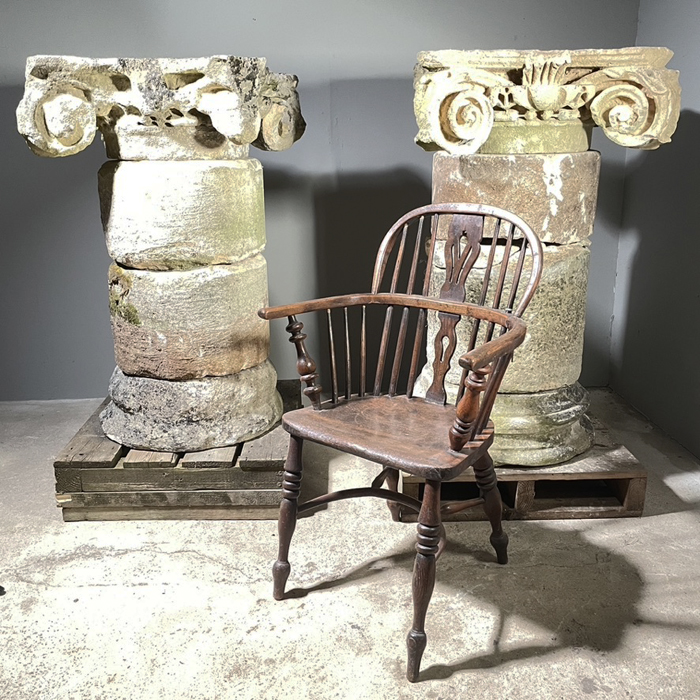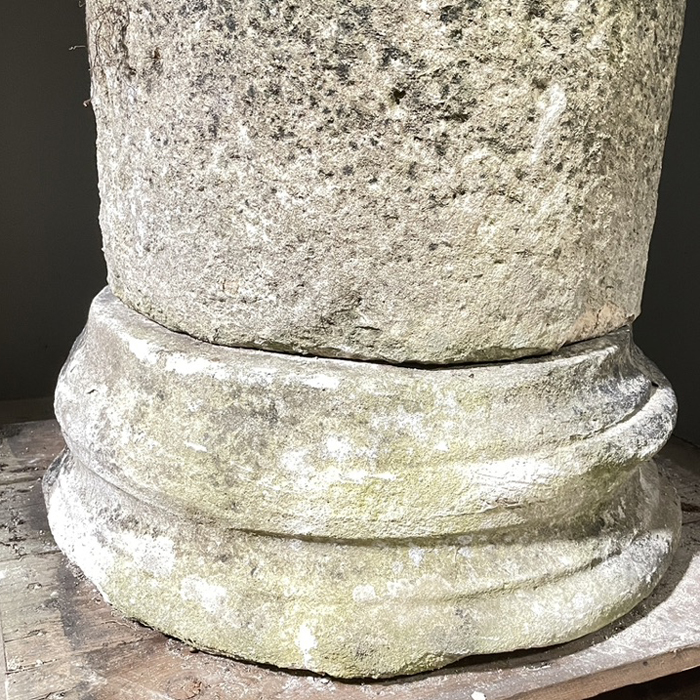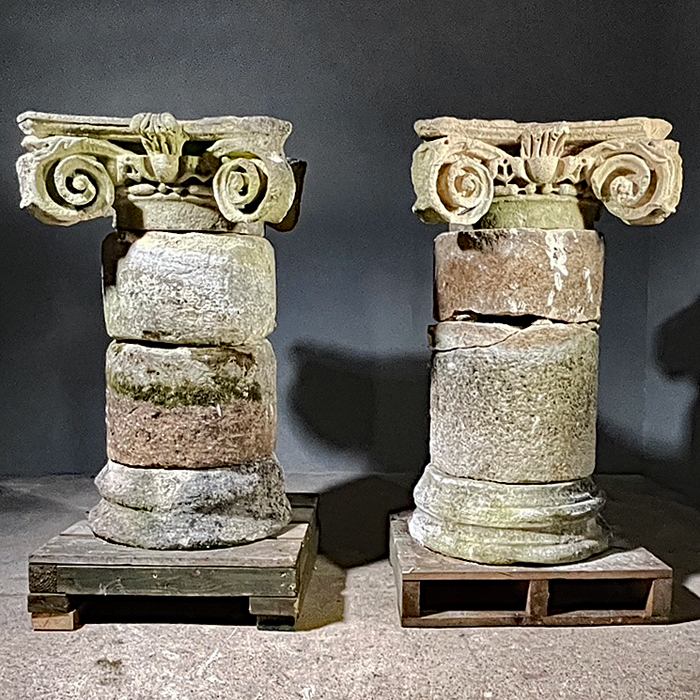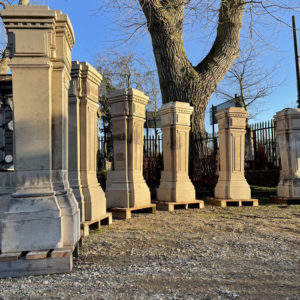A pair of English carved limestone Ionic order capitals with associated columnar stem-sections and feet
each with a Roman Ionic order capital, with spirally carved volutes, raised on cylindrical "drums" from the stem and a torus moulded foot, heavily weathered
£5,600
LASSCO found these characterful capitals in the grounds of a house in the outskirts of Oxford. The house was formerly the home of Sir James Gowans a scientist of great renown. His research conducted at The William Dunn School of Pathology at Oxford that peers have described as “beautifully conceived and executed experiments, … that revealed the essential cellular basis of the immune response, which is still how we understand the immune response today”. He was to become the head of the UK’s Medical Research Council. He was knighted and became honorary fellow to three Oxford Colleges: Exeter, St. Catherine’s and Lincoln.
We suspect that Gowans’ association with the latter college resulted in his acquisition of the carved stonework – presumably surplus to requirements after one of the several phases of extensions and alterations that have been undertaken at Lincoln College since Herbert Read built the small but elegant library with its peristyle of limestone columns. As ornaments in Gowans’ shrubbery they weathered to a much greater extent than those on the building. The Library soon outgrew the building and it has since been re-purposed.
The columns are dry-built and can be deconstructed for transport. The missing drums from the upper sections of the columns mean the entasis – the narrowing of the column as it gets higher results in a mis-match between the capital and the stem. These columns make fantastic garden ornaments and could be used as pedestals.

